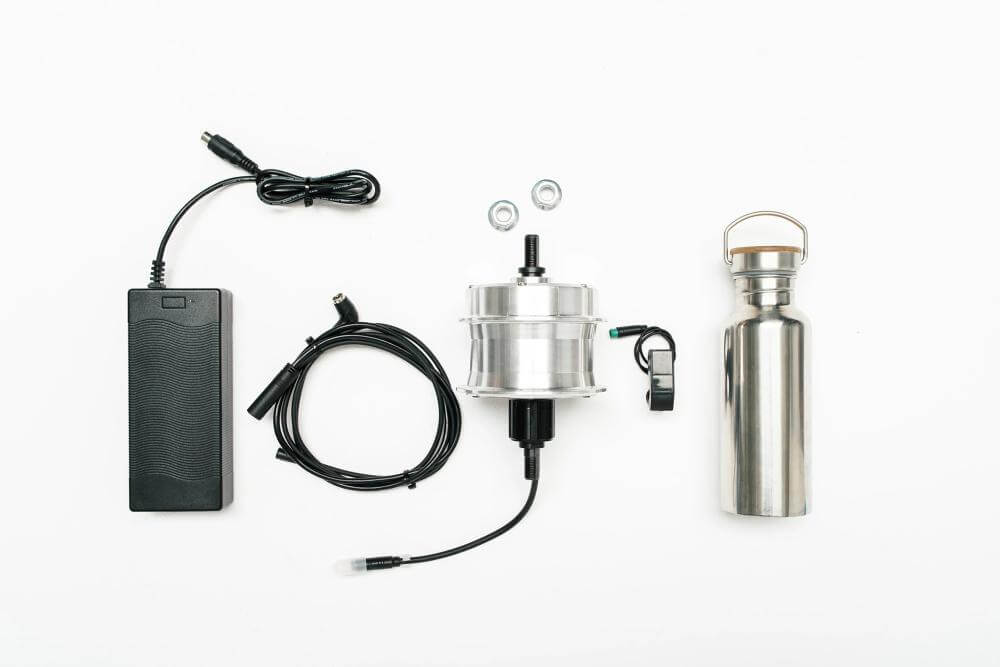How do electric bikes work?
Electric bikes have become increasingly popular compared to conventional bicycles. Nowadays, they are a common sight on our roads and in our cities. But how do they work? You will be surprised to know that they use high technology to allow for comfortable and fluid movement. In this article we explain the process step by step.
Contenidos
A combination of engine and propulsion
Many people think that electric bicycles are powered exclusively by a motor. In fact, it plays a fundamental role in their movement, although it is not the only one in charge of it. If so, they could be considered as a motorbike or a moped, which is not the case at all. Moreover, this would entail a whole new regulatory and technical regime.
On the other hand, pedalling plays a very important role. This is responsible for starting the engine, and this depends on the type of bicycle. Some are activated immediately as soon as they detect pedalling, while others are activated as soon as pedalling has started. If you want to know one in detail, we invite you to discover the Capri Metz+ Space Blue.
So that you can understand it better, we are going to explain step by step how it works.
1. Initial impulse
When we start pedalling, an electric current is generated inside the motor, which is activated by its battery, commonly made of lithium-ion. This is responsible for setting the other systems in motion, but it requires that initial impulse provided by the driver.
2. Chain effect
When the mechanism has received the signal, it emits another impulse that produces a chain effect. It is then passed to the controller to coordinate the rest of the systems. This ensures that the electromagnets remain in the correct position at all times during the rotation, thus maintaining the balance.
3. Loading of the coils
The controller emits an electrical charge to the coils. These use energy to activate two magnetic fields, which constantly alternate to speed up the movement. In this step, brushes can come into play, although brushless models (which do without brushes) are more recommendable. This is because they do not wear out as easily.
4. Motor tour
As the magnetic fields of the coils are opposite, a kind of electrical tension is created in the fixed polarity magnets. These are then detected by a sensor, which sends a rotation signal to the engine. This sensor, in turn, determines the power level according to the force the rider is exerting on the pedals.
5. Movement Enhancement
The engine, on receiving the signal from the sensor, starts to rotate. This results in an impulse that is passed on to the bicycle pedals, which move more agilely than with human intervention alone. It should be noted that this only occurs when the initial sensor is activated by the passage of one magnet over another inside the disc.

What does the motor of an urban electric bicycle look like?
In order to analyse its operation, it is necessary to focus on the engine, as it is the most important element. It mustnot provide a speed higher than 25 km/h, according to Spanish and European laws. However, this speed can be exceeded if it relies on manual actuation, i.e. pedalling.
There are motors of different power ratings, but in no case may they exceed 250 W. Often, it can be disassembled to make the assembly easier to transport or even switched off to serve as a conventional one. On the other hand, it is programmed to stop when the brake is applied or a certain speed is exceeded.
The engineincorporates a battery that has a range of between 25 and 70 kilometres, depending on the model. OurCapri Berlin Crema 7V, for example, stands out thanks to its 40 km of travel. At the same time, it needs to be recharged every few hours from the mains. It can also be found in three areas: on the frame, on the wheels or on the tyre.
It is most often composed of a series of strategically arranged electromagnets. These are activated by a process called magnetic repulsion to alternate their north-south poles. To ensure that the process is always balanced, there are conductive plates and brushes, which can be replaced by a controller.
Why do you have to pedal an electric bike if it already has a motor?
This is one of the most common questions, but the answer is quite simple. Pedalling is essential for the bicycle to be considered as such, as it is not a motor vehicle. Thus,the motor includes a pedal assist sensor, but does not replace it.
The reality is that the motor is responsible for assisting the pedalling and turning it into a mere complement. In other words, the effort invested has nothing to do with the conventional one, since most of the impulse is taken up by electricity. As a result, they are much more comfortable to use than others.
What if it has an accelerator?
It is true that electric vehicles can have an accelerator, but in that case they do not depend exclusively on the engine either. This system is divided into three main types: push-button, fist and trigger. So what changes in this case in terms of how it works?
This mechanism is based on providing an impulse directly to the motor in the form of an electrical signal. This, on receipt, boosts the speed in an extremely short space of time. Currently, Spanish regulations allow it to go from 0 km/h (stationary) to 6 km/h immediately.